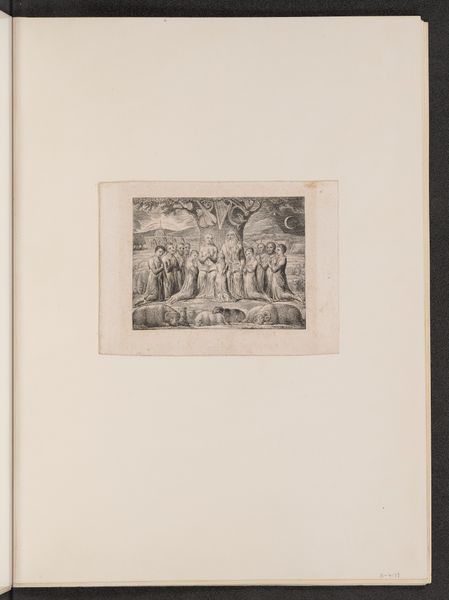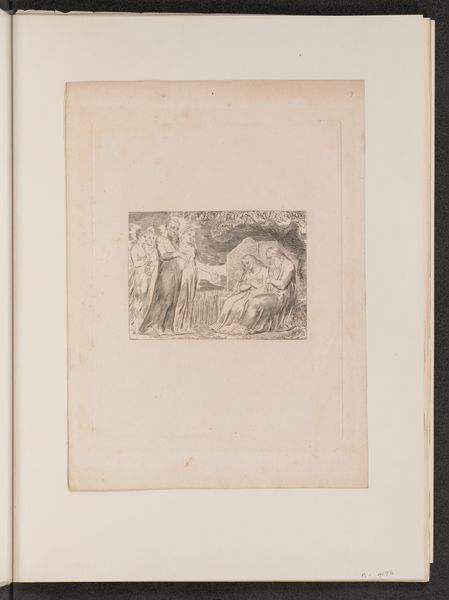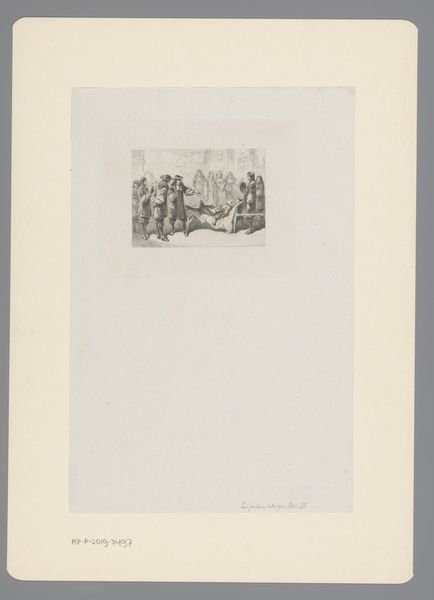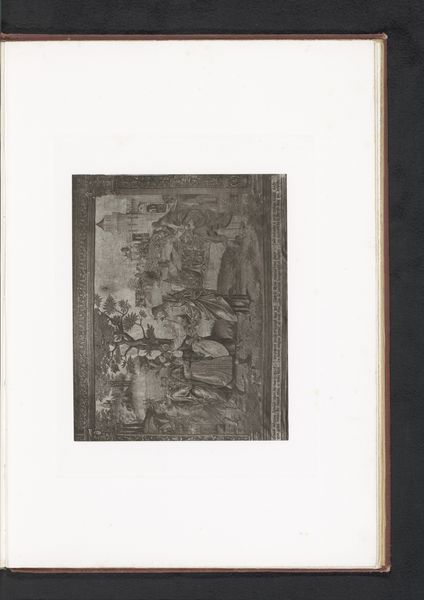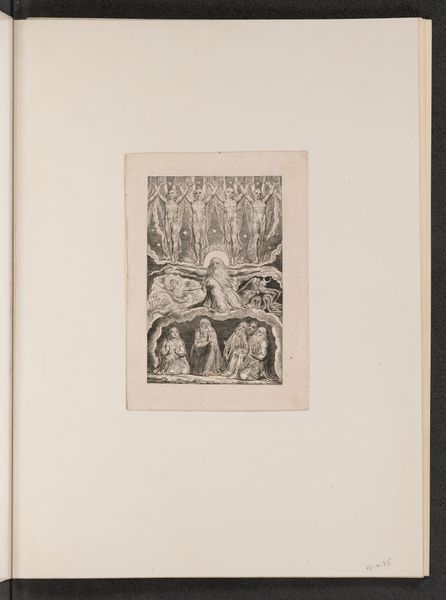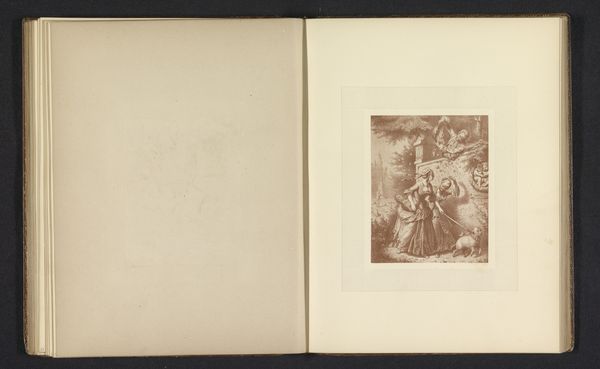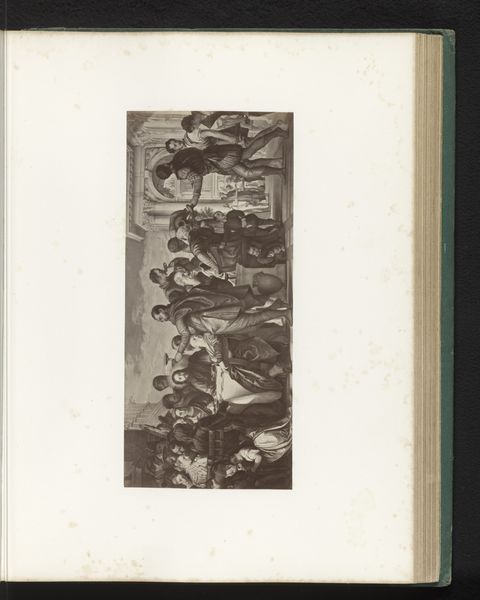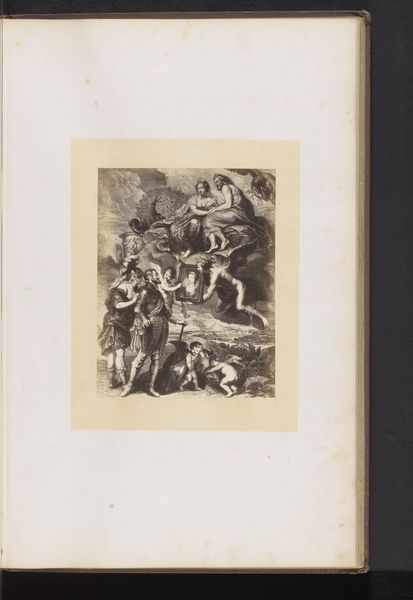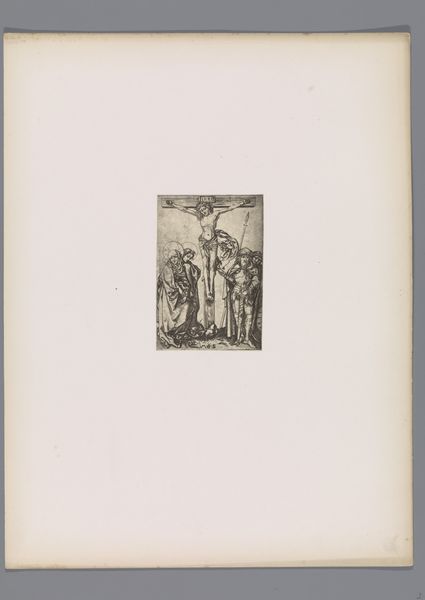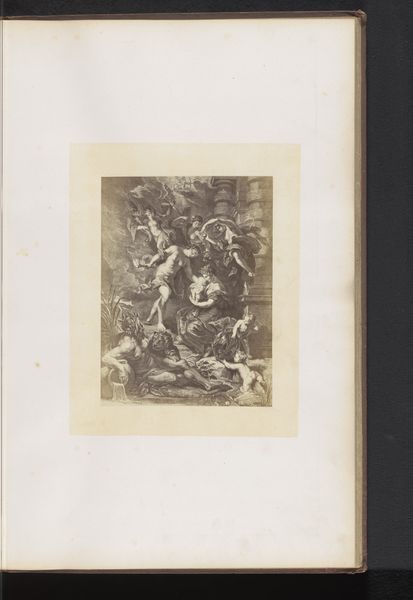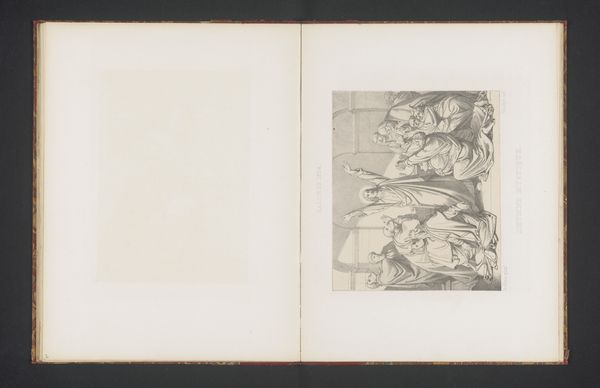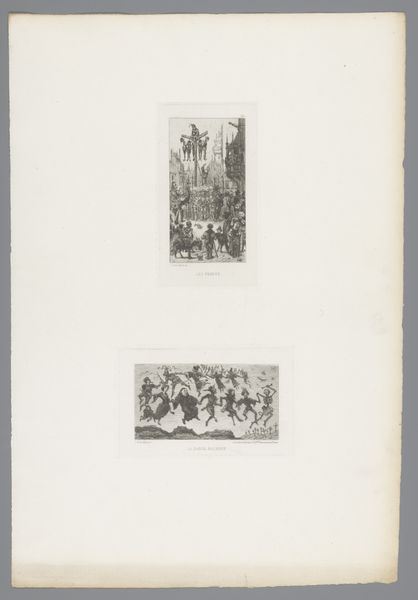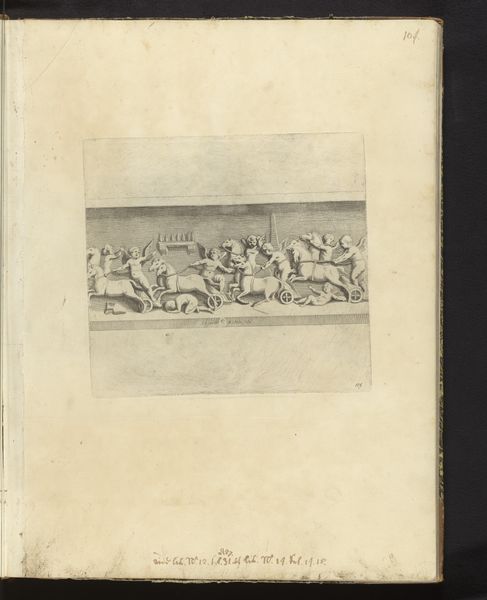
drawing, print, paper, ink
#
drawing
#
narrative-art
# print
#
figuration
#
paper
#
ink
#
romanticism
#
history-painting
Dimensions: image: 9.1 × 11.7 cm (3 9/16 × 4 5/8 in.) plate: 19.9 × 16.5 cm (7 13/16 × 6 1/2 in.)
Copyright: National Gallery of Art: CC0 1.0
Editor: We're looking at William Blake's "Job and His Family," made around 1825, using ink on paper. The first thing that strikes me is its dreamlike quality and the contrast between the serene figures and what looks like a brewing storm in the background. What do you make of this piece? Curator: Blake's imagery here is deeply rooted in socio-political critique and religious symbolism. The narrative stems from the Book of Job, a story of suffering and faith. But consider the context of Blake's time. What societal pressures and religious norms might he be responding to? The seemingly serene figures are positioned under a gnarled tree. It begs the question, is this tranquility genuine, or is it a fragile facade against impending turmoil, mirroring societal unease with established orders? Editor: That's a really interesting point. The expressions on their faces are hard to read, almost blank. So, the storm isn't just a literal storm, but also reflects a societal one? Curator: Exactly! Blake often used religious narratives to comment on contemporary political and social issues. His artistic choices, like the somewhat awkward positioning of the figures and that dominating tree, reflect his critique of the rigid societal structures he observed. Think of the Romantic era's focus on the individual and their struggles against institutions. Can you see that struggle reflected in Job's family? Editor: I can see how Blake might be critiquing the structures around him, depicting Job and his family as potentially alienated from the structures or society itself. It does makes me look at the figures in a very different light. Curator: And that re-evaluation, that shift in perception is precisely what makes Blake so powerful. He encourages us to question not just the narrative, but also the forces shaping our understanding of it. Editor: Thank you, this was a really helpful overview! Curator: It's a fascinating artwork. Examining such artwork teaches how public role and the politics of imagery evolve together through different ages.
Comments
No comments
Be the first to comment and join the conversation on the ultimate creative platform.
